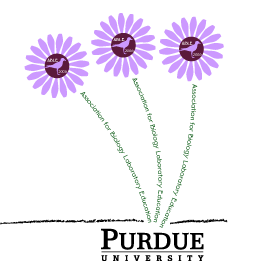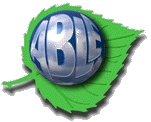Site Links
![]() ABLE 2007: University of Kentucky, Lexington, KY June 5-9. Host: Ruth Beattie
E-mail: rebeat1@uky.edu
ABLE 2007: University of Kentucky, Lexington, KY June 5-9. Host: Ruth Beattie
E-mail: rebeat1@uky.edu


Mini Workshop
Friday June 9
Knox, Cheryl and Carol Jansky
Nosonia vitripennis: a Drosophilia alternative
In the span of approximately one month, our students use the parasitoid wasp, Nasonia
vitripennis, to observe independent assortment, epistasis and crossing
over in eye color of F1 and F2 offspring from gray and scarlet-eyed parents. The
advantages of Nasonia vitripennis over other commercially available
model organisms are: 1) these insects can be sexed in the pupal stage (no more
2 a.m. harvesting of virgin females); 2) development can be arrested by refrigeration
(induced diapause); 3) induced diapause can also be useful if you wish to maintain
your own stock; 4) recessive alleles are easily “visible” in these
haplodiploid insects through the male (haploid), and 5) the life cycle is approximately
15 days.
In our 3-lab sequence, we investigate three alternative hypotheses concerning the pattern of inheritance of two different eye colors. When the F1 generation matures, students discover that the two eye colors are controlled by two genes with epistatic interactions. Furthermore, after the F2 generation matures, the students are able to decide whether the genes assort independently AND determine the order of eye color synthesis. The strains we use show linkage with crossing-over.
Participants will receive 1) Nasonia pupae, 2) a CDE containing information about the Nasonia life cycle and photos of adults, and 3) hands-on experience sexing Nasonia pupae.